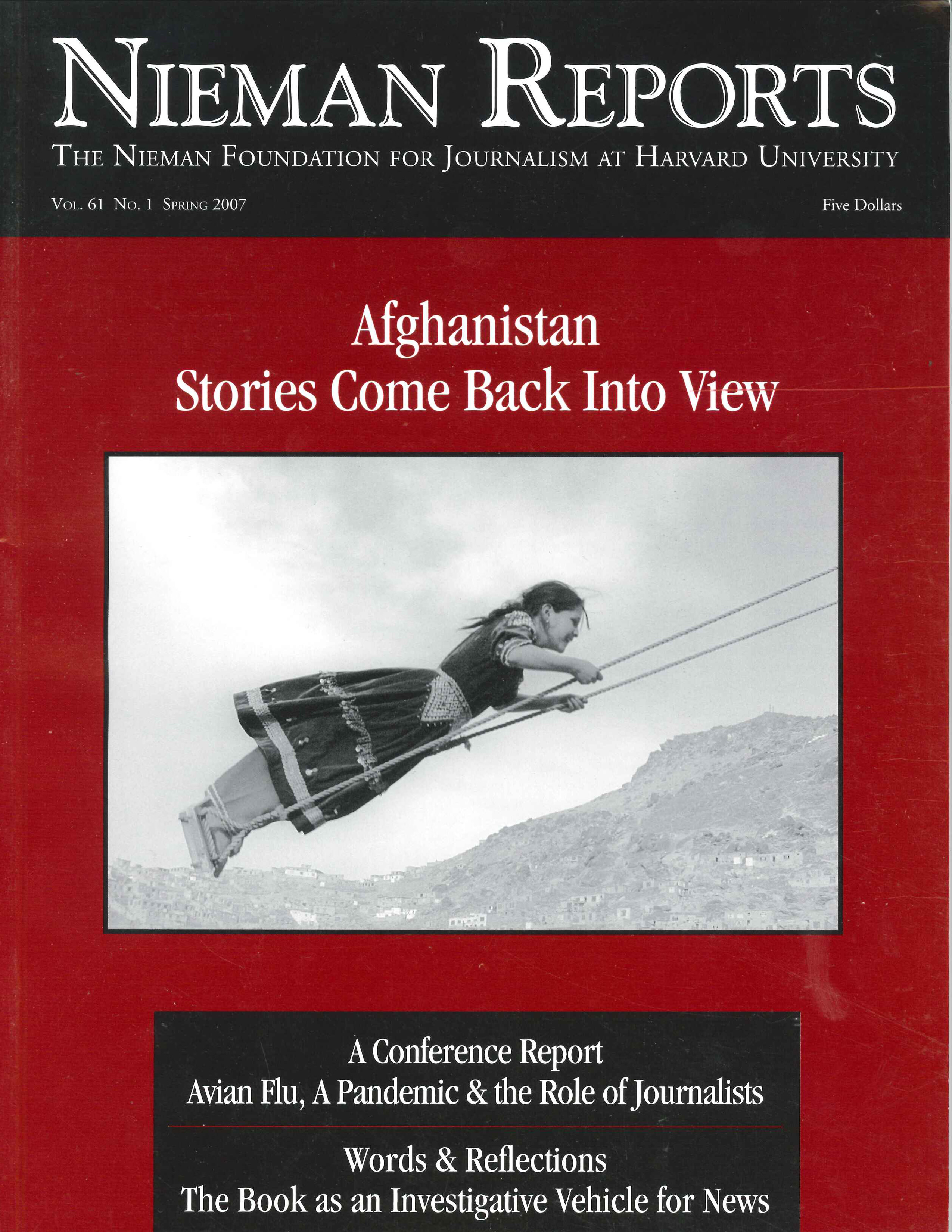Caught in a fierce Taliban ambush while traveling last summer with coalition troops in southern Afghanistan, (London) Sunday Times foreign correspondent Christina Lamb writes about her escape from death, her second one while on assignment in that country. “Once I was angry that Afghanistan was no longer in the news,” Lamb says, as she describes the different phases of news coverage she’s witnessed through the years. “Now I feel sad that Afghanistan is back in the news.”
Two years after the U.S. invasion of Afghanistan, the Arkansas Democrat-Gazette sent reporter Bob Wigginton and photographer Benjamin Krain on a month-long reporting assignment to Afghanistan. Their words and images describe how they learned what billions of dollars in reconstruction funds “had accomplished for the Afghan people.”
Syed Saleem Shahzad, a bureau chief in Pakistan for Asia Times Online, explains what happened to him, a Pakistani, and his interpreter when they traveled to a place where the Taliban rule, and he knew non-Afghan journalists “faced the possibility of being abducted or killed.” They were held by Taliban leaders and, when released, faced a perilous journey back to Pakistan, where Shahzad wrote a six-part series for Asia Times. A New York Times article describes how Times correspondent Carlotta Gall and photographer Akhtar Soomro were treated by Pakistani intelligence officials, who seized their cell phones, computers, notebooks and photo equipment. “All the people I interviewed were subsequently visited by intelligence agents,” Gall wrote.
Renée Montagne, a host of NPR’s “Morning Edition,” writes about the reliance Western journalists have on interpreters and explores the fears accompanying their work. When he went into a Taliban stronghold in the fall of 2006, Montagne’s interpreter erased “many valuable numbers” from his cell phone so he would not endanger sources, family and friends if the Taliban got his phone. Washington Post writer Pamela Constable, who first reported from Afghanistan in 1998, describes what it’s been like during Taliban and non-Taliban rule to be a female journalist and report on Afghan women’s lives.
Charles M. Sennott, a foreign correspondent with The Boston Globe’s Special Projects Team and VII agency photographer Gary Knight embedded with the Afghan National Army, and a multimedia story conveys what they found. NPR reporter Ivan Watson told listeners about the Taliban’s defeat in 2001; now, as he returns to report in Afghanistan, he finds “it is a resurgent Taliban that is knocking at the gates of the Afghan capital.” In an excerpt from his forthcoming book, “How We Missed the Story,” Roy Gutman, foreign editor for the McClatchy Newspapers, examines the difficulties Western reporters experienced in reporting on Osama bin Laden’s activities in Afghanistan in 1998. Craig Pyes, senior correspondent at the Center for Investigative Reporting, set out to learn how two Afghans died while detained by U.S. Special Forces in Afghanistan; Pyes details the many barriers the military put in their way as he and Kevin Sack reported this story for the Los Angeles Times.
Travis Beard, chief editor of Aïna Photo in Afghanistan, describes that nation’s first-of-its-kind photojournalism school and introduces four of the Afghan photographers who were trained there. Images by Fardin Waezi, Gulbuddin Elham, Najibullah Musafer, and Safya Saify invite us to view their country as they see it in the stories they visually tell.


